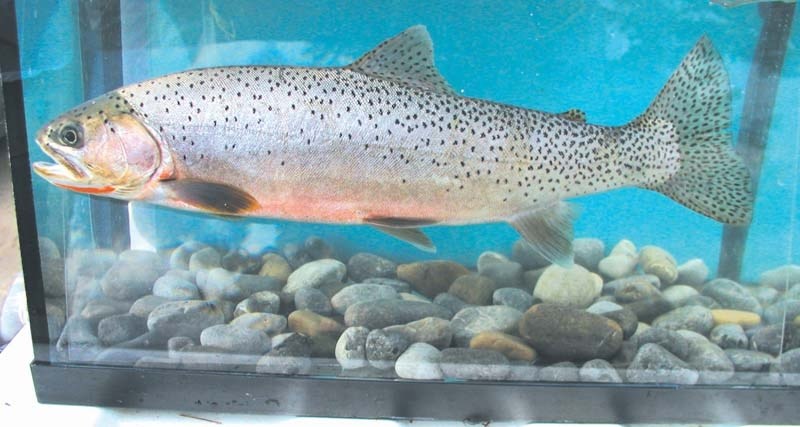Media reports of the “spread” of fish whirling disease throughout the Bow River corridor has angling enthusiasts concerned that misinformation about the disease may be perpetuating assumptions about the parasite that attacks juvenile fish.
Cochrane and area fish guru Guy Woods said it’s still premature to tell what effect fish whirling disease is having on the trout and whitefish populations from Banff to Bassano.
According to Bev Larson, fish disease specialist with the province, “at this point, we are not seeing any declines in the fish populations”.
Woods said he and other anglers have noticed a disappointing start to this fishing season, which officially opened April 1, but that it would be “hard to speculate that it might be (due to) whirling disease” and that the steady decline he has observed over the last 20 years may be partly attributed to area population growth.
Whirling disease affects many species of fish, but primarily juvenile trout and whitefish populations. The parasite causes fish to whirl around in circles until they die and may cause skeletal deformations.
The consumption of fish carrying the parasite is not harmful to human health and may not be detectable.
David Blair has been the proprietor of Fish Tales Fly Shop in southeast Calgary for the last 20 years. The lifelong fly fisherman takes issues with recent media reports that the parasite is “spreading” and the alarmism that has resulted.
“The single biggest misconception that anglers need to understand is that (the Canadian Food Inspection Agency) is confirming where it is and not that it’s spreading,” he said.
He added that the only thing anglers can do is to “clean, drain and dry” their boats, boots and motors to ensure cross contamination is not occurring between water bodies.
Larson confirmed that government data is based on samples taken throughout the river corridor last fall. She said the highest concentrations appear to be located in and around Banff.
She said it is still too preliminary to determine how long whirling disease has been present in these water channels, but it is believed not to have been above “detectable levels” prior to 2001.
The province took samples from 1997-2001 throughout the Bow, Oldman and Red Deer rivers that did not reveal positive results for whirling disease.
Blair said the recent changes in fishing regulations – which now lists the entire Bow River corridor from Banff National Park through to Bassano as catch and release – was in the works for years before there was any inkling of fish whirling disease in this corridor.
Woods’ work with the former Jumping Pound Chapter of Trout, which folded in the mid-90s, revealed that the tributary has been a spawning area for trout and even has its own trout strain: a rainbow-cutthroat mix.
According to the CFIA, the parasite was detected downstream from the confluence between Jumping Pound and the Bow River.
“If whirling disease is present up the system then it could have a major impact on juvenile rainbow trout populations,” said Woods.
The CFIA will continue samples and testing throughout this season to better establish how long the parasite has been in these channels.
There is no treatment for fish with the disease or known method to eradicate.
On Feb. 10 the CFIA declared the parasite was present throughout the Bow River watershed; the same was declared of the Oldman River watershed May 1.
Fish whirling disease has been detected in 25 U.S. states, with detection dating back to the 90s.




